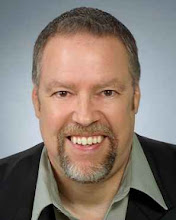Managing Information: C. Tryon/book review by J. Colannino
This review first appeared in the newsletter of the Knowledge and Information Professionals Association (KIPA)
Knowledge Management (KM) is a fledgling discipline with origins in four established ones: computer science (informatics), library science (cataloging and indexing), business (project management), and psychology (organizational dynamics). Depending on its birthplace, KM means different things or at least has different emphases, from the philosophical to the pragmatic. In fact, KM is in desperate need of better philosophy, primarily for the sake of undergirding its praxis, which has often taken many a wayward turn.
Although educated in the library science tradition, Tryon comes down solidly on the project-centric side of things where he has spent the better part of his living. Tryon cuts to the chase by systematizing what works and presents a considered step-by-step process: 1. Create a knowledge management vision and goals statement based on best KM processes and practices. 2. Evaluate your organization by conducting a KM assessment. 3. Use the assessment to define a knowledge inventory. 4. Create a knowledge portal to share and disseminate that knowledge.
In order to facilitate these steps Tryon systematizes Knowledge Management into what I believe will become a foundational model for KM -- the KIPPAR model. Picture a knowledge inventory (KI) supported on three pillars: projects (P), processes (P), and artifacts (A). These pillars are grounded on knowledge repositories (R); these then, are the elements of the KIPPAR model. The knowledge inventory declares what counts as knowledge; knowledge is produced especially when an organization undertakes projects. Such projects require a variety of processes that inevitably contribute to organizational knowledge. That knowledge is defined and codified by particular artifacts (e.g., documents, specifications, etc.). In order to keep from reinventing the wheel, knowledge must be preserved for posterity in the knowledge repository and remain accessible via various portals.
None of this feels new, but it is. Although it has been known for sometime that good PM requires good KM, Tryon firmly establishes PM as KM's handmaiden. Moreover, the KIPPAR model is a real contribution, showing succinctly how the pieces fit together. Finally, Managing Organizational Knowledge provides a practical guide for establishing formal KM practice in a language that organizations already speak.
The work is organized into ten chapters and has an introduction, conclusion, acknowledgements, and an Appendix with helpful templates. Such a project-centric approach to KM is bound to be useful, and I recommend this book for any organization or practitioner seeking to install or enhance KM efforts.
